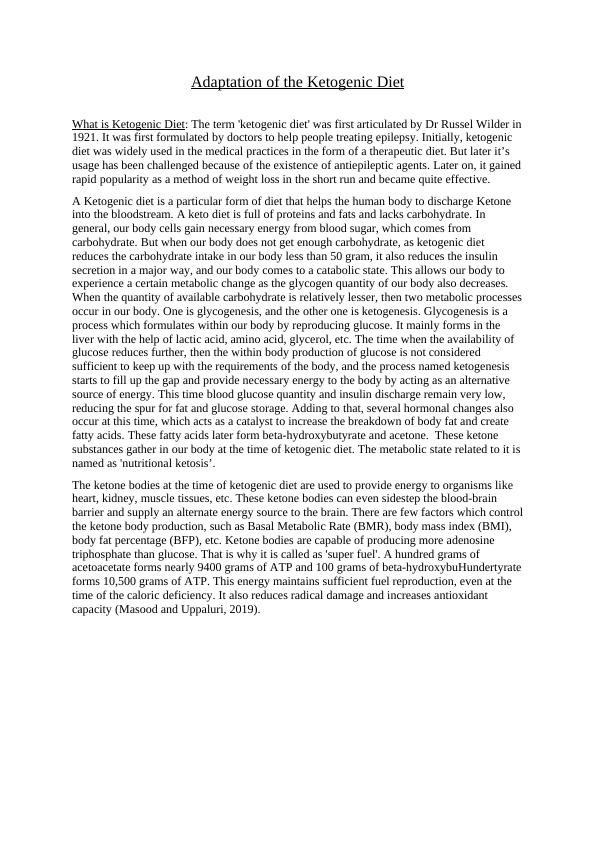Adaptation of the Ketogenic Diet
Added on 2022-12-18
2 Pages613 Words28 Views
End of preview
Want to access all the pages? Upload your documents or become a member.
Free fatty acids are continually
|4
|754
|21
Nursing Assignment: Diabetes Mellitus Case Study
|9
|1531
|49
Question | Insulin is a kind of hormone which is produced from pancreas inside the human body.
|7
|1495
|11
Ketogenesis: A Biochemical Process for Energy Production
|6
|1484
|100
Comparison of Ketogenic, Atkins, Intermittent Fasting, and Vegan Diets
|10
|3657
|85
Diabetic Ketoacidosis (DKA) - Pathophysiology, Deteriorating Patient, Treatment Strategies, Ethical and Legal Practice, Roles and Responsibilities, Quality Use of Medicines, Complementary Therapies
|1
|1964
|477

